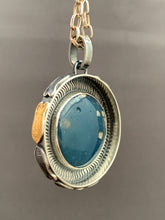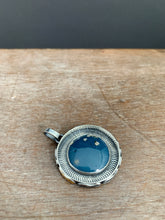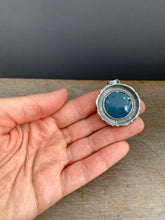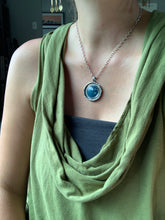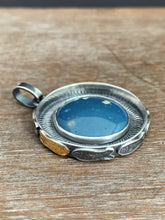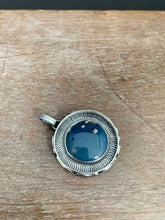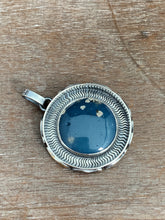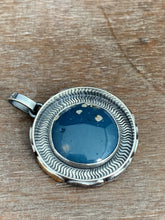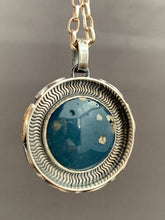
This pendant features a big beautiful Leland blue cab. Swimming around this stone are 8 fish, one is swimming against the flow, and has had 24k gold foil permanently fused to it. This fish is placed at the top of the pendant so you can be reminded to be “that fish” when you look down.
Leland blue measures: 22mm
Pendant measures: 34mm
There is a saying.
‘Only dead fish go with the flow”
While fish swim with the flow of a stream, and against it. The ones swimming against it have a goal in mind. They have to work hard, and think about that goal to get anywhere.
Only dead fish ALWAYS “go with the flow” floating downstream obviously with no thought of their own, because they are dead. They have no mission, no goals and no capacity to do anything but float along without resistance.
Life isn’t a quick dash to the finish line. It’s a long and grueling marathon, so don’t be a dead fish.
Be different. Swim against the flow. Follow the truth, which isn't always popular.
Pendants do not come with a chain. But you can purchase any of the medium to large pendants from my website if you need one.
-About Leland blue:
From 1870 to 1884 the Leland Lake Superior Iron Co. operated an iron smelter north of the river mouth, supplied with ore from the Upper Peninsula and charcoal made from local maple and beech timber; the charcoal was produced in fourteen beehive kilns near the smelting furnace, which produced up to 40 tons of iron per day. In 1884 the plant was sold to the Leland Lumber Co. which operated a saw mill.
This unique material was a by-product of the short lived days of attempting to smelt iron ore in the Northwestern corner of lower Michigan. The great Mesabi iron ranges of the Upper Peninsula supplied the ore and it was unloaded by hand on the docks of the new foundries on Lake Michigan. The blast furnaces were stoked with a high grade charcoal, made only from the hard woods of beech and maple. This charcoal, which combined with local limestone flux to reduce the iron ore to pig iron, gave this foundry glass its unique colors and textures. The smelters began operation in 1870 and by 1900 most operations had ceased due to the exceedingly costly supply of hardwoods as nearby forests were clear cut.
Today the lucky rock hound may find a piece of the blue slag glass washed ashore on the beaches of Lake Michigan. A man made throw-away created from natural materials over 120 years ago at the Leland Iron Company in Michigan. For a brief 14 year period in history, the slag was discarded in the waters and tumbled naturally. A treasure found and re purposed!









